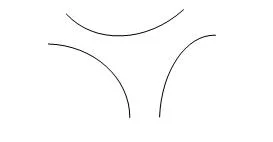Camber
Changing the angle of the axle, camber, can provide the benefits of:
- Decreased rolling resistance, secondary to decreased surface area in contact with the floor.
- Improved shoulder biomechanics with pushing
- Increased lateral stability
- Easier to turn wheelchair6
- The increased width of the chair must be considered prior to this change in wheelchair setup.
Propulsion
Appropriate wheelchair setup and propulsion technique can significantly affect the wheelchair user’s shoulder demand, energy expenditure and efficiency of propulsion. Current studies have found that propulsion mechanics are affected by wheelchair setup and that propulsion technique alone can affect the forces placed on upper extremity joints. These studies also identified propulsion techniques, which contributed to a higher incidence of median nerve damage (the nerve damaged in carpal tunnel syndrome). These included:
- Frequency of propulsion.
- Those subjects who push a higher number of times to maintain a desired speed displayed more median nerve damage.6
- Rate of Rise of Push Force.
- This is how fast the force rises from initial contact of the rim to peak force. Those who pushed harder at initiation of push, as well as those who pushed harder down toward the axle throughout the push stroke displayed more median nerve damage.6
- Tighter Grip on the wheel also produced more pressure in the carpal tunnel.6
- The general shape of the push should be an elongated oval (similar to a football) as opposed to an elongated triangle. (see illustration below) The stroke should be smooth and controlled, beginning at 1-2 oclock on the wheel and ending at 9-10. 6
- The hand then drops off the wheel and stays below the pushrim during the recovery phase. This produced longer contact with the wheel and less downward radial force. 6
Shape Created by Correct Hand Movement During Propulsion
Shape Created by Incorrect Hand Movement During Propulsion
REFERENCES
1/ Powers, C.M., Newsam, C.F., Gronley, J.K., Fontaine, C.A., Perry, J. Isometric Shoulder Torque in Subjects With Spinal Cord Injury. Arch Phys Med Rehabil Vol 75, 1994. 2/ Sie, I.H. Waters, R.L., Adkins, R.H. & Gellman H. Upper extremity pain in the post rehabilitation spinal cord injured patients. Arch Phys Med Rehabil Vol 73, 1994. 3/ Blackburn, T.A., MlcLeod, W.D., White, B., Wofford, L. EMG Analysis of Posterior Rotator Cuff Exercises. Athletic Training, Vol 25:1, Spring 1990. 4/ Druin E., Planten, K., A Class of Its Own. SCI and Shoulder Pain. Advance for Directors of Rehablitation. 5/ Powers, C.M., Newsam, C.F., Gronley, J.K., Mulroy, S.J., Perry, J. Effect of Seat Position on Shoulder Joint Demand During Manual Wheelchair Propulsion: A Pilot Study. 6/ Boninger, Michael. Platform presentation to SCI Centers of Excellence. Pittsburgh Pennsylvania.


